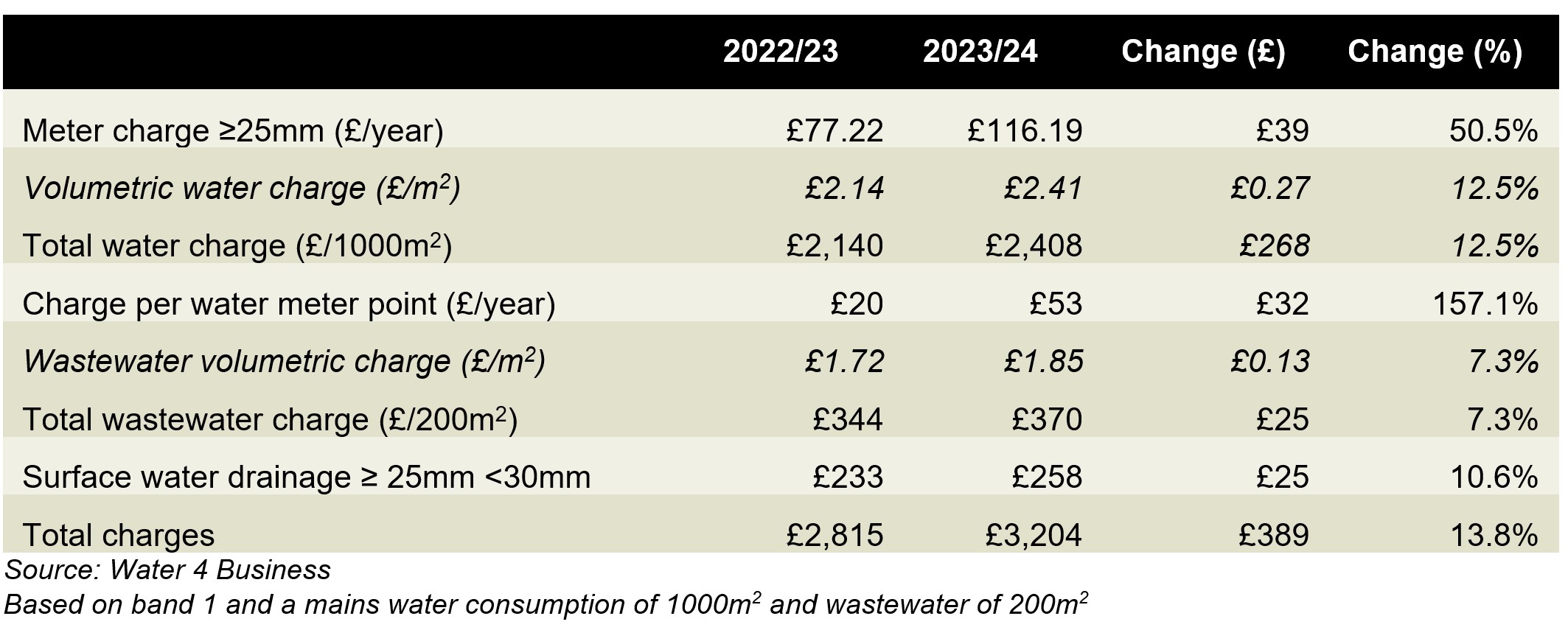Top three tips for reducing water costs
Water bills will rise by the highest in 20 years as water companies announce increases in charges. Here are three top tips for rural businesses to save water and mitigate those costs.
4 minutes to read
Average domestic customer water bills will surge by 7.5% in England and Wales and 5% in Scotland, according to the industry body, Water UK. Water prices for business users will go up by 6.4% on average, says the comparison website aquaswitch.co.uk.
We examine the potential impact for rural businesses and provide Knight Frank’s top three tips to reduce water costs.
Top three tips for saving water costs
Explore available grants
There are some worthwhile grants available to help with more efficient water application or secure alternative water supply. Henry Clemons, Knight Frank’s grant expert explains that “there is potential funding for items such as rainwater capture tanks which could really make a difference to rural business’ water costs”. The availability of the water resource management grants will vary between UK nations and can be competitive, but an expert like Henry can guide a business to the most appropriate funding using Knight Frank’s in-house grant tool.
Check your charges
Businesses should understand their water usage and charges to ensure that they are being billed correctly.
For example, suppose a business uses a significant amount of water in its operations and a lower volume of water returns to the sewers. In that case, the business may be overcharged for wastewater rates. Contact your water company to apply a “return to sewerage” factor to reduce the volumetric wastewater rates.
John Williams of Knight Frank’s Rural Consultancy team suggests “if your business is being charged a high surface water drainage fee, it is advisable to conduct a water audit to ensure that you are being fairly charged for your usage.” A water audit is an assessment of your water usage, which can help find inefficiencies and highlight savings opportunities. If the audit reveals that you have been overcharged for surface water drainage, you may be able to reclaim the excess charges from your water supplier
If a property is not connected to the sewers, it should not be charged a highway drainage charge.
Reduce your mains water consumption
Identify equipment and items that consume the greatest volume of water, from water troughs to sprayers.
Ensure that when in use these items are not leaking, and their water supply is turned off when not being used.
Where possible insulate water pipes to prevent cold weather-related leaks.
If practical, use equipment such as pressure washers rather than volume washers that consume less water.
Having a bore hole drilled on your farm may also be beneficial if the business consumes a large amount of water. Capital outlay costs will depend on the depth of the bore hole and associated infrastructure needed. But typically, a bore hole will cost around £10,000 to £20,000 and could pay back its investment in less than five years for a large volume mains water user.
What is the potential impact of the higher charges?
Inflation is blamed for the increases, partly due to the energy crisis, which has risen to a 40-year high. The costs incurred by local water companies to operate the water infrastructure have increased significantly.
Secondly, as aquaswitch.co.uk explains, “is a significant increase in default water rates most businesses pay.
Ofwat, the regulator, has reassessed their default price cap calculation, resulting in a 30% increase in the retail rates charged by business water suppliers.”
Based on a specific water company, the examples below show that domestic users could see an 8% to nearly 12% increase in water bills depending on the household’s metering situation. For an average rural business using 1000m2 of mains water and discharging 200m2 of wastewater, this rise is almost 14% or nearly £400 in 2023/24. This increase, of course, will vary between water companies and the volume of mains water consumed.
Example 1 – Domestic scenario (metered and non-metered)

Example 2 – Business scenario (metered)

Although cost increases aren’t in the realm of what has been seen with fuel bills, nevertheless, these rises are happening at a time when energy and diesel costs are falling. And so will offset some of those potential cost savings.
The above assumes that water is sourced from the mains. It is still the most common source of water. Around 85% of farms in a 2015/16 survey used mains water of which on average two-thirds of their water consumption came from the mains supply. This suggests that the majority of rural businesses will be impacted by these cost hikes.
Bills are not expected to drop in the future either. A House of Lords report on “Cleaning up failures in water and sewage regulation” (22 March) suggests that the cost of infrastructure to reduce the nation’s non-treated sewage discharges will mean water bills are likely to rise further.
Photo by Eric Garcia